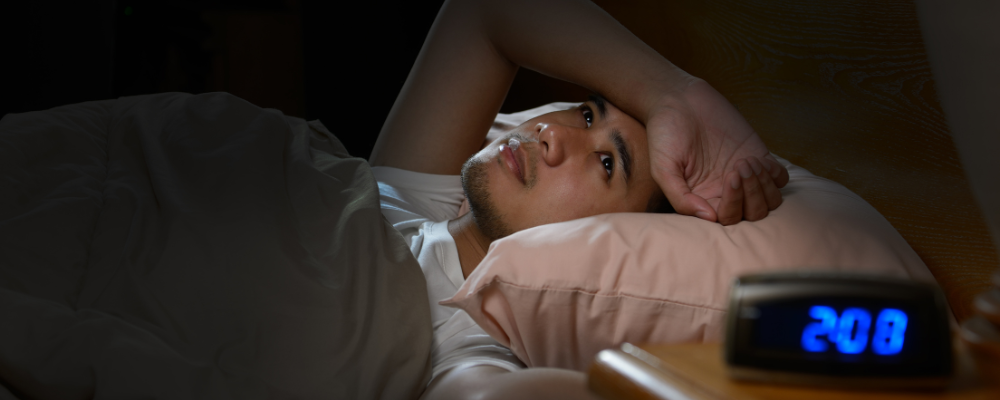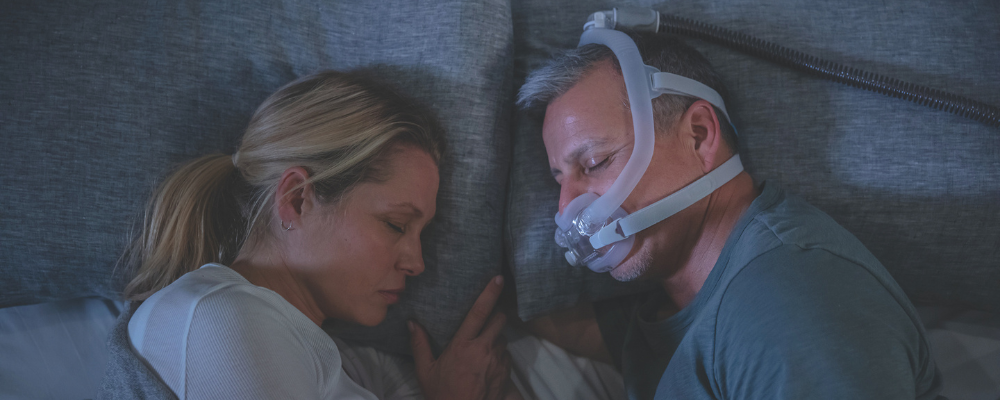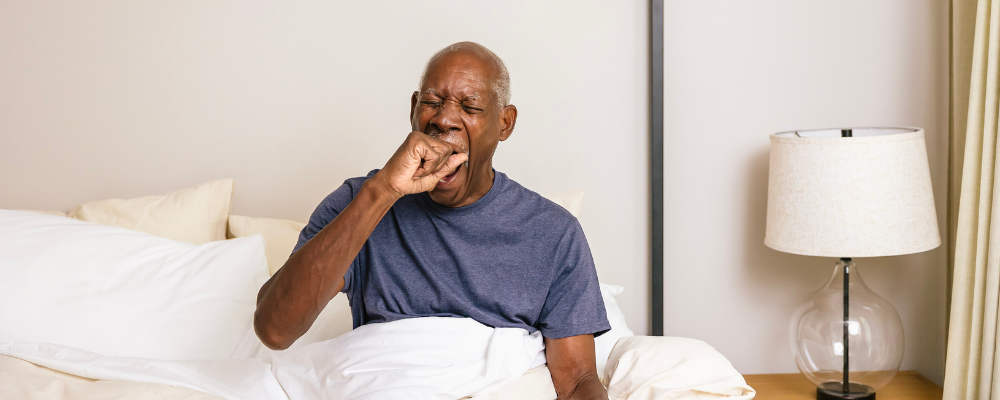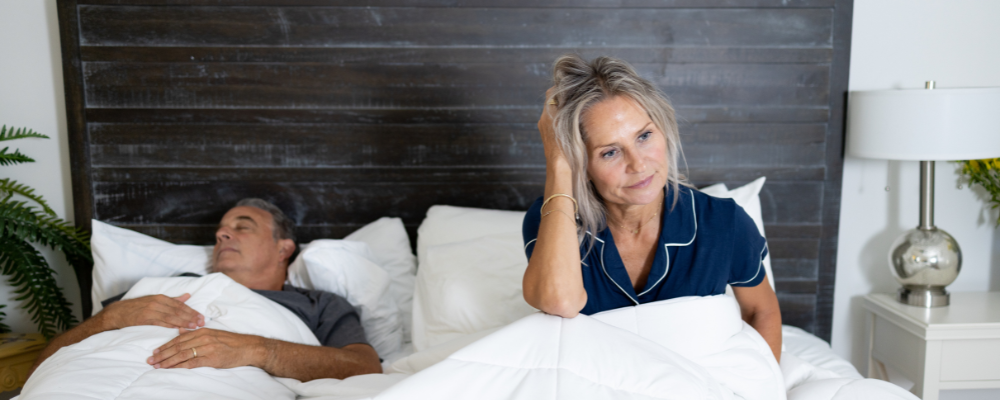Sleep apnea and insomnia are the two most common sleep disorders. As someone who doesn’t sleep well, you may be wondering if you have one, the other, or even both of these sleep problems. Does one cause the other? If so, which comes first? We’re here to clear up some of the confusion so you have one less concern keeping you up at night!
In The Article:
What's The Difference Between Sleep Apnea And Insomnia?
How Are Sleep Apnea And Insomnia Related?
How Are These Conditions Treated?
CPAP SUPPLIES THROUGH INSURANCE:
Aeroflow Sleep is in-network with most primary insurance companies and is accreditted by Medicare and Medicaid. Complete our Qualify Through Insurance Form, and we will automatically check to see if your plan covers CPAP supplies; including a machine, mask, and accessories. ***Must have a sleep study to qualify.***
You will also receive the care and attention every sleep apnea patient deserves; one-on-one clinical support in-home or via telehealth, a dedicated Sleep Specialist you can contact during business hours, and a user-friendly online portal with tailored replacement schedule, important updates and notifications, and educational resources.
Let us take the headache out of healthcare. Join the Aeroflow Sleep family today! It only takes 5-7 minutes to get started.
What’s the Difference Between Sleep Apnea and Insomnia?
The daytime symptoms of sleep apnea can feel very similar to those of insomnia. The underlying causes however, are very different. Let’s first consider each condition individually:
Obstructive Sleep Apnea (OSA)
- OSA is the most common form of sleep apnea, and can be potentially serious.
- Think of OSA as a mechanical breathing disorder. The upper respiratory muscles relax and block the airway. Other obstructions, such as enlarged tonsils, can also block the airway. or you may temporarily stop breathing altogether. This can happen dozens of times per night, causing you to wake up repeatedly as your body senses you're not getting enough oxygen.
- Untreated OSA can lead to excessive daytime drowsiness and brain fog. This impairment (the inability to think clearly) can put you at increased risk of injury and/or death.
- Serious medical conditions can develop as a result of OSA. Some of these are high blood pressure (hypertension), stroke, and heart disease.
- Common risk factors for obstructive sleep apnea include: diabetes, obesity, and narrow airways. Male patients, smokers, and people with craniofacial conditions (such as cleft palate) are also more likely to develop OSA.
Insomnia
- Insomnia complaints revolve around having trouble falling or staying asleep.
- This sleep disorder differs from sleep apnea in that there is no physical blockage of the upper airways. It typically involves more psychological factors.
- Insomnia is often caused by stress, time zone traveling, and working the late shift. Inactivity during the day, caffeine use, and certain medications are also common culprits.
- Symptoms of insomnia can mimic those of sleep apnea. Patients often suffer from excessive sleepiness, daytime brain fog, and irritability.
- Good sleep is vital. It regulates hormones and insulin. It also maintains systemic immunity and wards off a long list of health problems.
- Sleep deprivation can lead to diabetes, heart disease, obesity, and stroke. It can also lead to cognitive problems, mental health issues, and an overall drop in quality of life.
How Are Sleep Apnea and Insomnia Related?
It turns out that it's quite common for people to experience both conditions simultaneously. Insomnia can be a symptom of sleep apnea because you wake up so much trying to get enough oxygen. Some OSA patients also have trouble going back to sleep once they're up. Sleep medicine and insomnia-specific prescriptions won’t work on obstructive sleep apnea, though.
If you are still constantly waking up, even on those medications, that’s a sign to call your doctor. They may begin investigating the possibility of the three sleep apnea syndromes: OSA, central sleep apnea, or a mix of the two.
Do you snore like a ripsaw, waking with a headache or sore throat? Heavy snoring at night and gasping for air are two other indicators of sleep apnea.
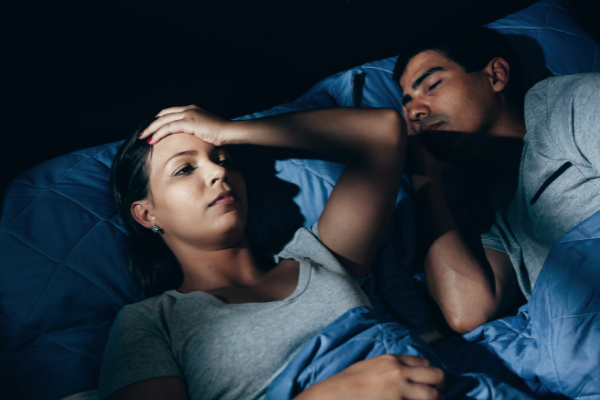

How Are These Conditions Treated?
- Continuous Positive Airway Pressure (CPAP), is the most common treatment for OSA. It can help with sleep apnea and the insomnia caused by that apnea. The nonstop airflow, delivered by mask or nose piece, keeps your airways from collapsing, preventing you from snoring and waking up gasping for air.
- There are three types of PAP machines - CPAP, BiPAP, and APAP. These treatment options work with a variety of CPAP masks and accessories. Sleep apnea equipment is our area of expertise! If you need help figuring out the best system for you, one of our Aeroflow Sleep Specialists can help.
- If you are already diagnosed with sleep apnea and use a CPAP machine, you could still be or become an insomniac. If that sounds like what you are experiencing, be sure to get in touch with your healthcare team. You may need to treat insomnia (whether it be short term or chronic insomnia) in addition to your apnea.
- If you have insomnia and suspect you may also have sleep apnea, talk to your doctor about getting a sleep study. The medical term for this is polysomnography. A sleep specialist tracks and records several aspects of your physiology while you sleep.
- They can do it at a specialized medical center for the most accurate results, or you can do an at-home sleep test. The key measurement of sleep apnea is your AHI, or Apnea-Hypopnea Index. This is how many times each hour you stop breathing or have reduced breathing.
The Takeaway
These medical conditions can be dangerous individually. Sleep apnea with comorbid insomnia increases that danger. Each should be taken seriously, and doubly so if occurring simultaneously! Ask your doctor if there's more we can do for your specific condition.
If you know you have been diagnosed with sleep apnea on its own, or in connection with insomnia, but have yet to start treatment, call Aeroflow Sleep directly. We can get your PAP therapy covered up to 100% through insurance. Our phone lines are open during normal business hours: Monday - Friday, 8AM - 5PM EST via 1-800-480-5491
References
Janssen, Hennie C.J.P., Lisette N. Venekamp, Geert A.M. Peeters, Angelique Pijpers, and Dirk A.A. Pevernagie. “Management of Insomnia in Sleep Disordered Breathing.” European Respiratory Society. European Respiratory Society, September 30, 2019. https://err.ersjournals.com/content/28/153/190080.
MedlinePlus [Internet]. Bethesda (MD): National Library of Medicine (US); [updated 2020 Jun 24]. Insomnia; [cited 2022 Jul 18]; Available from: https://medlineplus.gov/insomnia.html
Ong, Jason C, and Megan R Crawford. “Insomnia and Obstructive Sleep Apnea.” Sleep medicine clinics. U.S. National Library of Medicine, September 1, 2013. https://www.ncbi.nlm.nih.gov/pmc/articles/PMC3763954/.
Eckert, Danny J, and Atul Malhotra. “Pathophysiology of Adult Obstructive Sleep Apnea.” Proceedings of the American Thoracic Society. American Thoracic Society, February 15, 2008. https://www.ncbi.nlm.nih.gov/pmc/articles/PMC2628457/.


